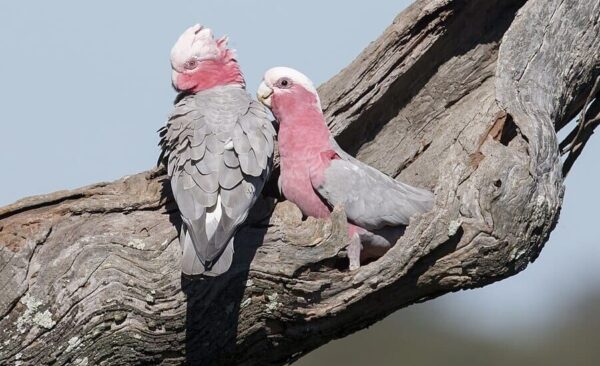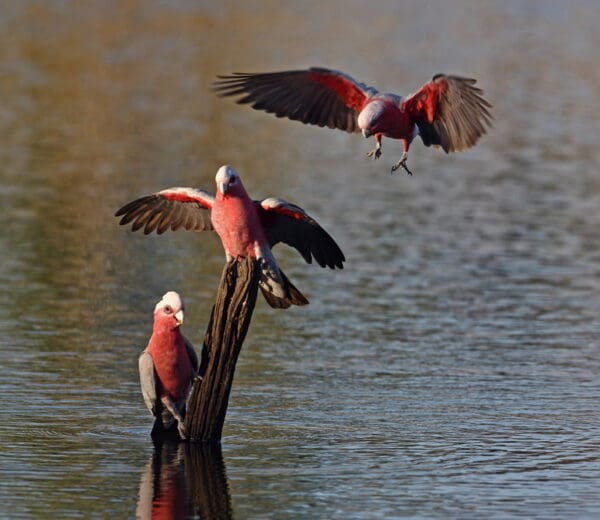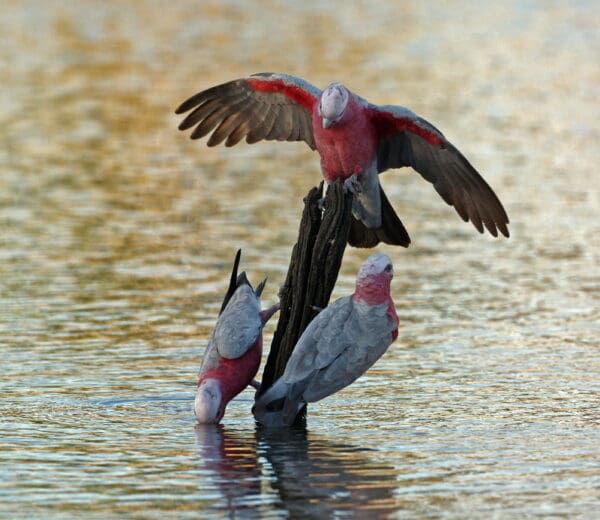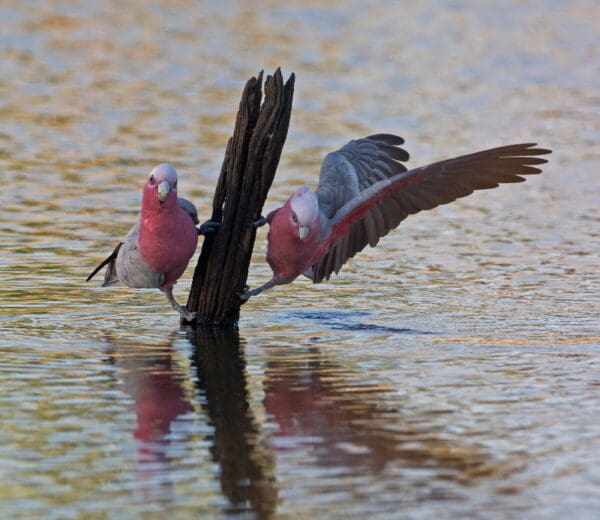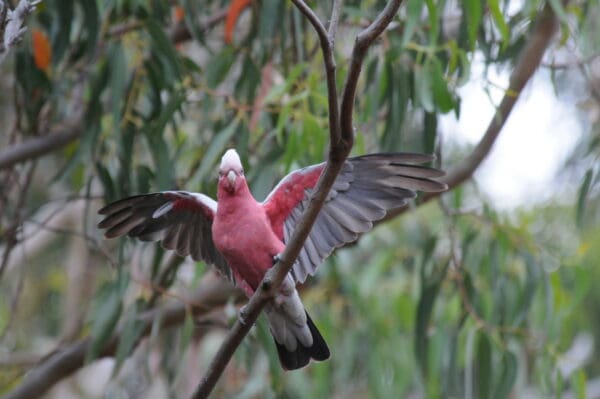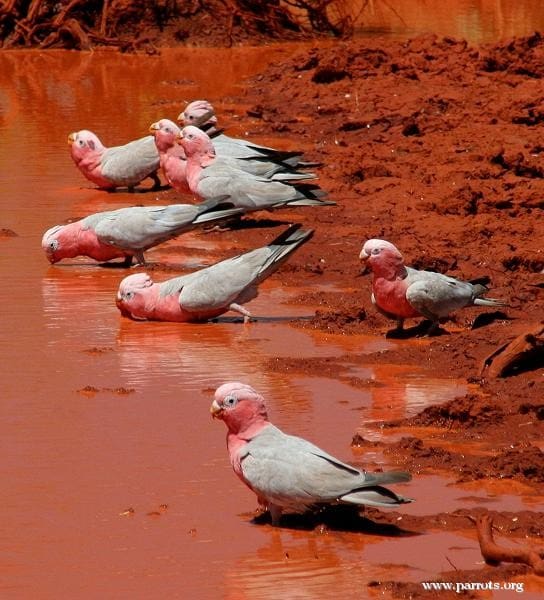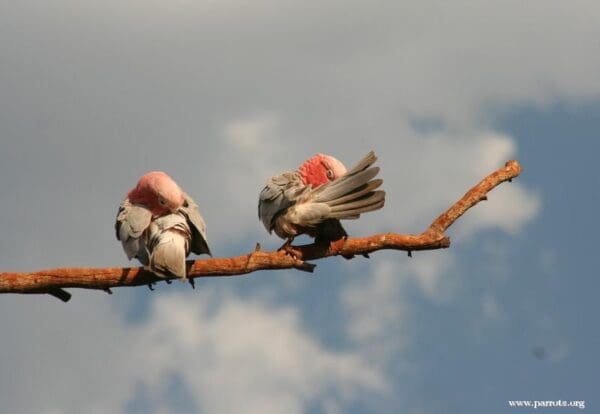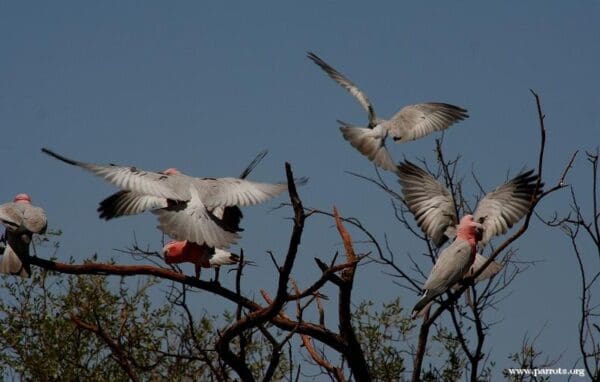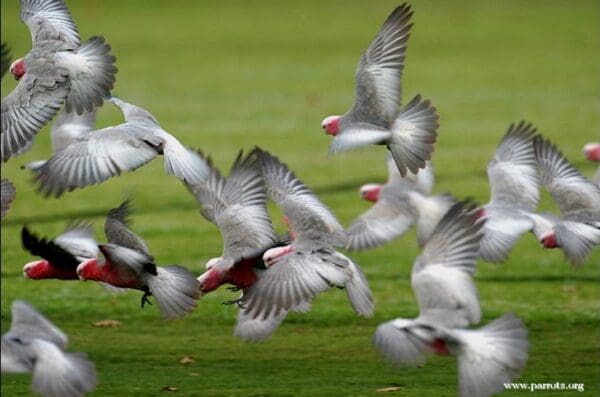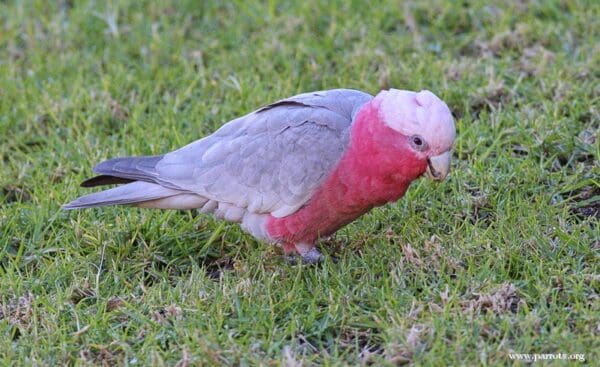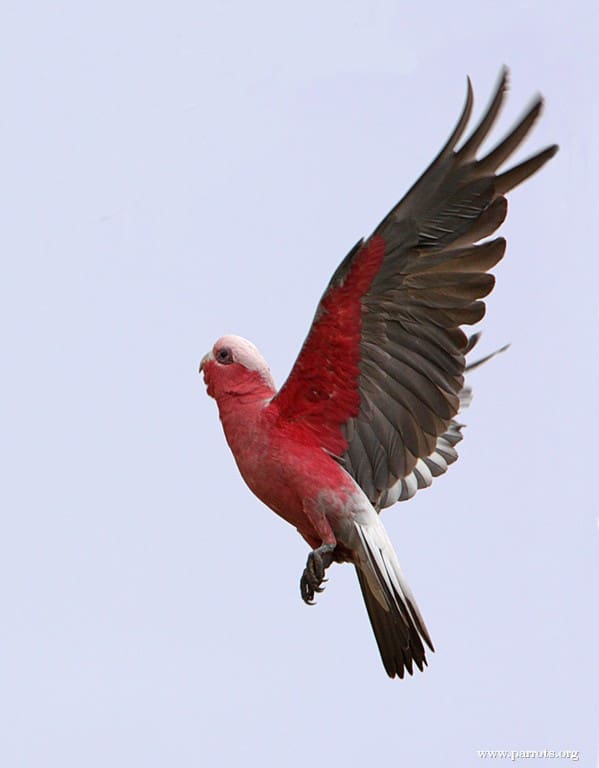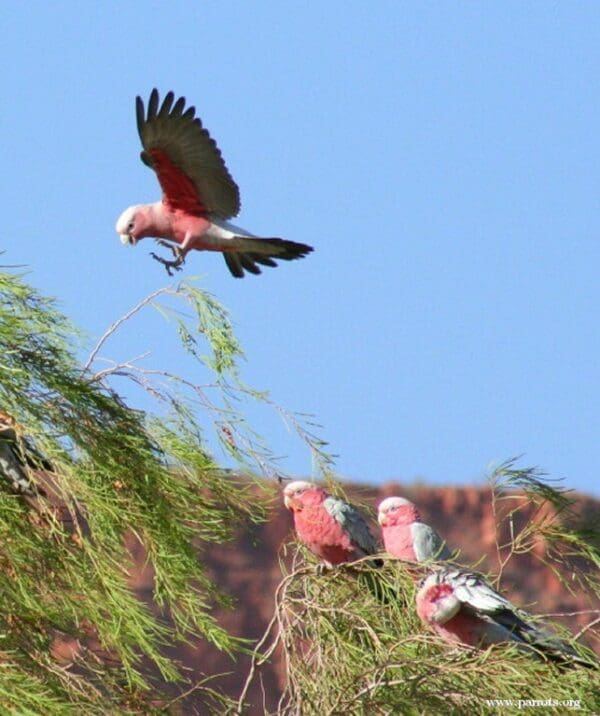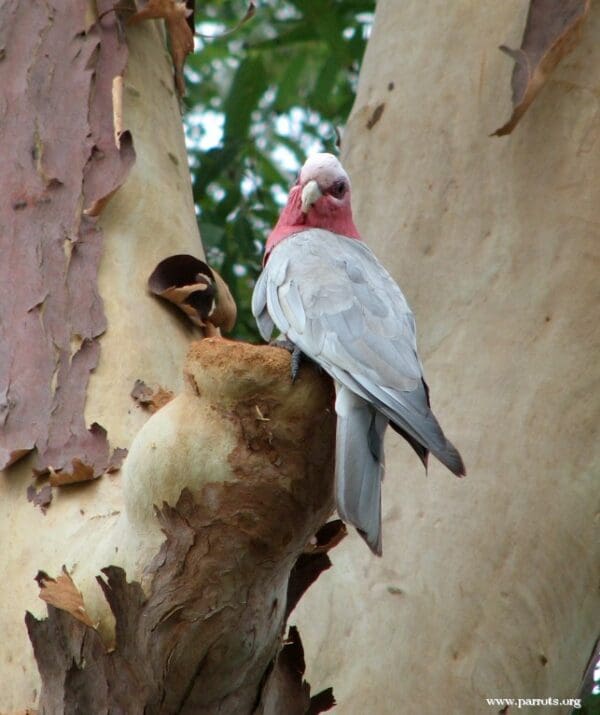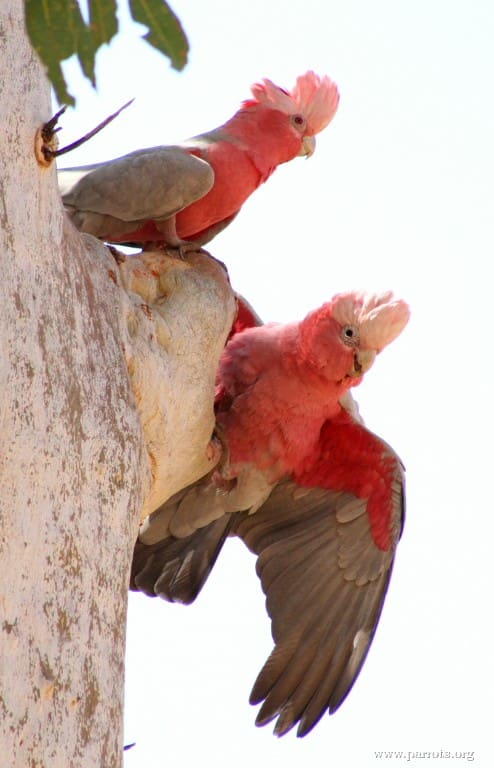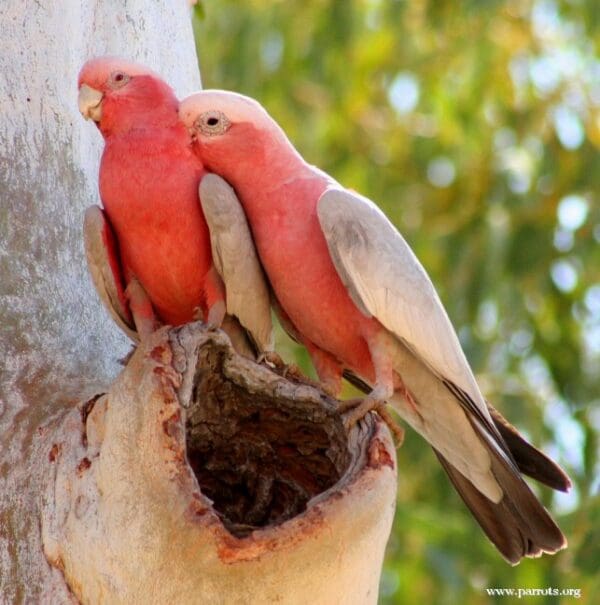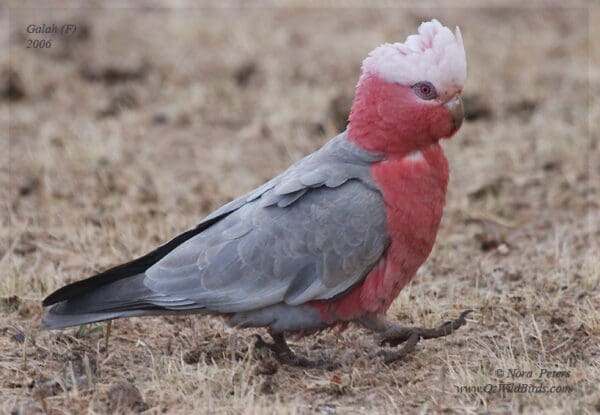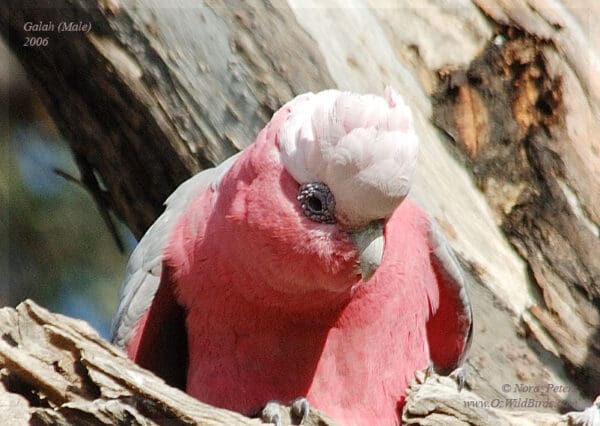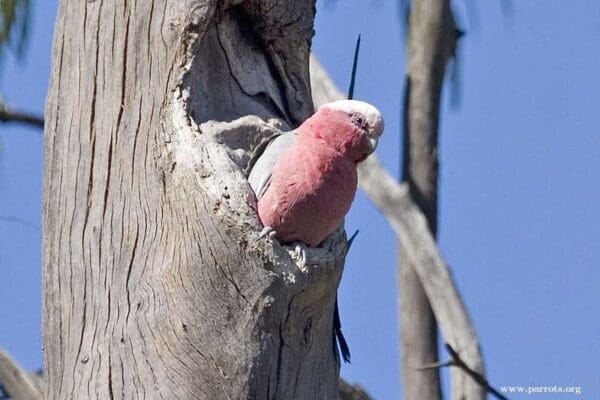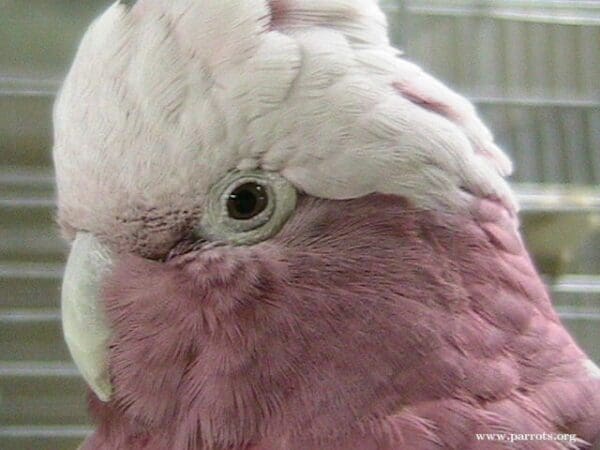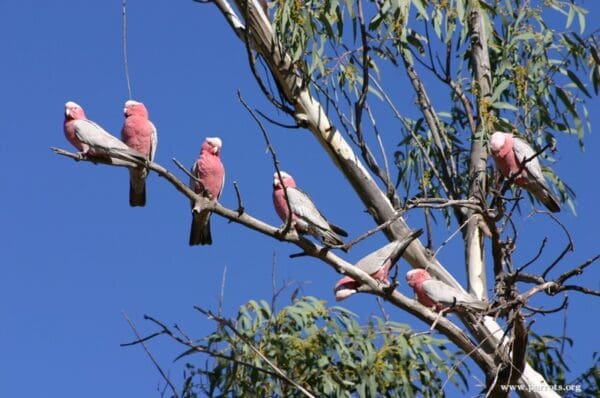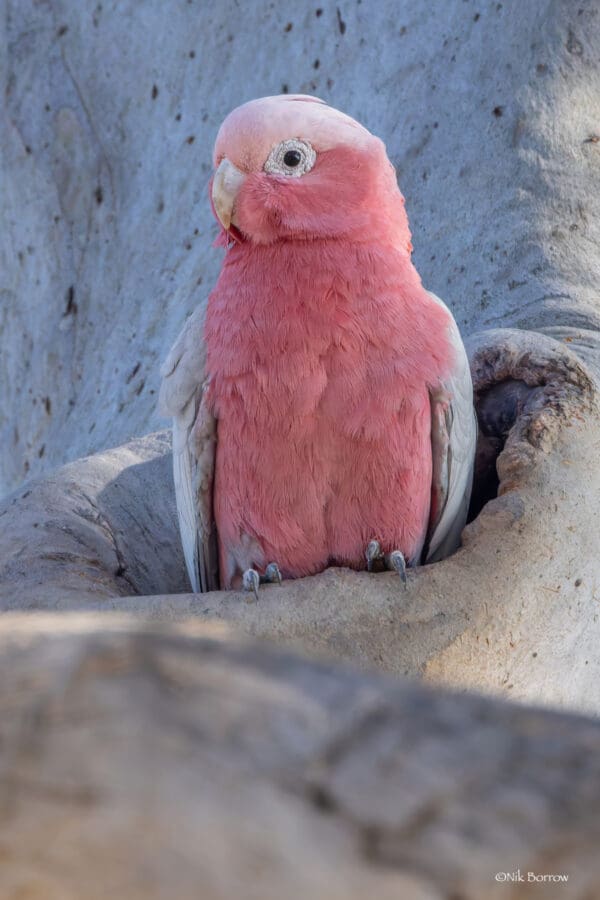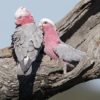

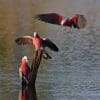
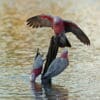
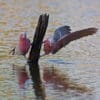
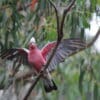
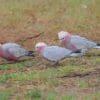
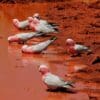
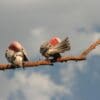
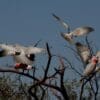
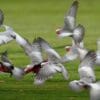
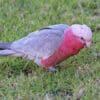
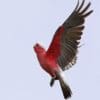
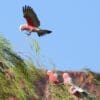
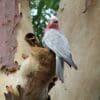
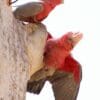
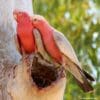
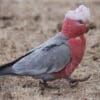
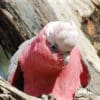
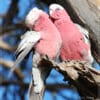
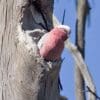
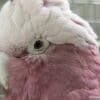
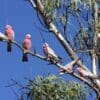
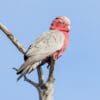
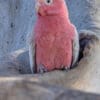
DID YOU KNOW?
The Rose-breasted Cockatoo or Galah is one of the few parrot species which has seen its wild population rise instead of decline.

Eolophus

roseicapilla
Size:
35 cm (13.6 in)
Weight:
270-400 g (9.5-14 oz)
Subspecies including nominate:
three: C.r. roseicapilla, C.r. albiceps; one specimen of C.r. kuhli (Juniper and Parr, 1998, Forshaw, 2006)
Colour Adult:
C.r. roseicapilla: Both adults soft pink forehead, crest and crown, with white wash, blending into darker hindneck; deep pink face, neck and underparts; grey wings; grey undertail coverts; pale grey rump. Horn-coloured beak. Eye ring grey/white. Eye dark brown in male, red/brown in female.
C.r. albiceps: Both adults white forehead, crest and crown, with pink bases to feathers, separate from darker pink area behind neck. Eye ring deep pink to dull red.
C.r. kuhli: Both adults as in albiceps but generally paler in colour; shorter crest peaking on forecrown; noticeable white bordering on feathers below eye; slightly smaller.
Colour Juvenile:
C.r. roseicapilla: As in adult but duller plumage; grey wash in crest, crown and breast. White eye ring smooth. Eye pale brown.
C.r. albiceps: As in juvenile roseicapilla.
Call:
Variety of calls; contact call chet chet every 10 seconds, repeated rapidly when sounding alarm call, loud screeching scree notes accompany lifing of wings and fanning of crest.
More Information:
Content Sources:
CITES
Pet Place
BirdLife International
Cornell Lab of Ornithology/Birds of the World
Parrots: A Guide to Parrots of the World, Juniper and Parr, 1998
Parrots of the World, Forshaw and Cooper, 1989. 2010 edition
Parrots of the World, Forshaw, 2006.
Parrots in Aviculture, Low, 1992.
Avian Pediatric Seminar Proceedings, various authors, 1988.
Captive Status:
Widespread in captivity.
Longevity:
25-40 yrs
Housing:
Walk in aviary, minimum length 7 m (23 ft).
Diet:
Green foods (kale, lettuces, chickweed); limited mixture of seeds, dry and sprouted; fresh corn, birdie bread and egg when rearing young; some will also eat: apple, carrot, broccoli, celery and peas in the pod; complete kibble.
Enrichment:
Different chewables (bird-safe branches, sterilized pine cones, different sized perches), hanging toys, vegetable tanned leather toys, different bird-safe dried grasses; bathing.
Nest Box Size:
12″ x 12″ x 24″ (30.5 cm x 30.5 cm x 61 cm) vertical box.
Clutch Size:
3 or 4 but up to 6.
Fledging Age:
7-8 weeks
Hatch Weight:
8-9 g (0.3-0.31 oz)
Peak Weight:
293-423 g (10.25-14.8 oz)
Weaning Weight:
246-363 g (8.6-12.7 oz)
World Population:
Unknown; reported as common. Increasing.
IUCN Red List Status:
Least Concern
CITES Listing:
Appendix II
Threat Summary:
Appears to be very little threat; this species has benefitted from increases in food generated by agriculture. The sale of easily trapped young birds and their transport to another state for sale is, unfortunately, legal and has led to people letting loose birds thousands of kilometres outside their natural range. These birds in turn mate with local birds of different subspecies.
Range:
C.r. roseicapilla: W Australia, south of the Great Sandy Desert and east to Harts Range, possibly to Simpson Desert, southern Northern Territory.
C.r. albiceps: E Tasmania and east to SE mainland Australia, north to lat 20 S in N Queensland and west to Simpson Desert.
C.r. kuhli: N Australia, from Kimberley division of W Australia east to S Cape York Peninsula and Burdekin River, N Queensland.
Habitat:
Found in variety of areas including woodland, savanna, and cultivated areas; does not occur in dense forest. Up to 1600 m (5248 ft).
Wild Diet:
Mainly feeds on seeds, such as oats and grass, and some insect larvae, berries, buds, flowers and Eucalyptus seeds. Will forage for undigested seeds in horse and cattle faeces.
Ecology and Behaviour:
Forages up to 15 km (9 mi) from nest site; non-breeding or post breeding birds may go further. Gathers in large, raucous groups with other cockatoos.
Clutch and Egg Size:
3 or 4 but up to 6; ovate eggs, 35.0 x 26.5 mm (1.4 x 1 in).
Breeding Season:
August-November in most of range. Nest is in hollow, with a thick layer of small leafy branches lining the hole.
Related Links:
—
